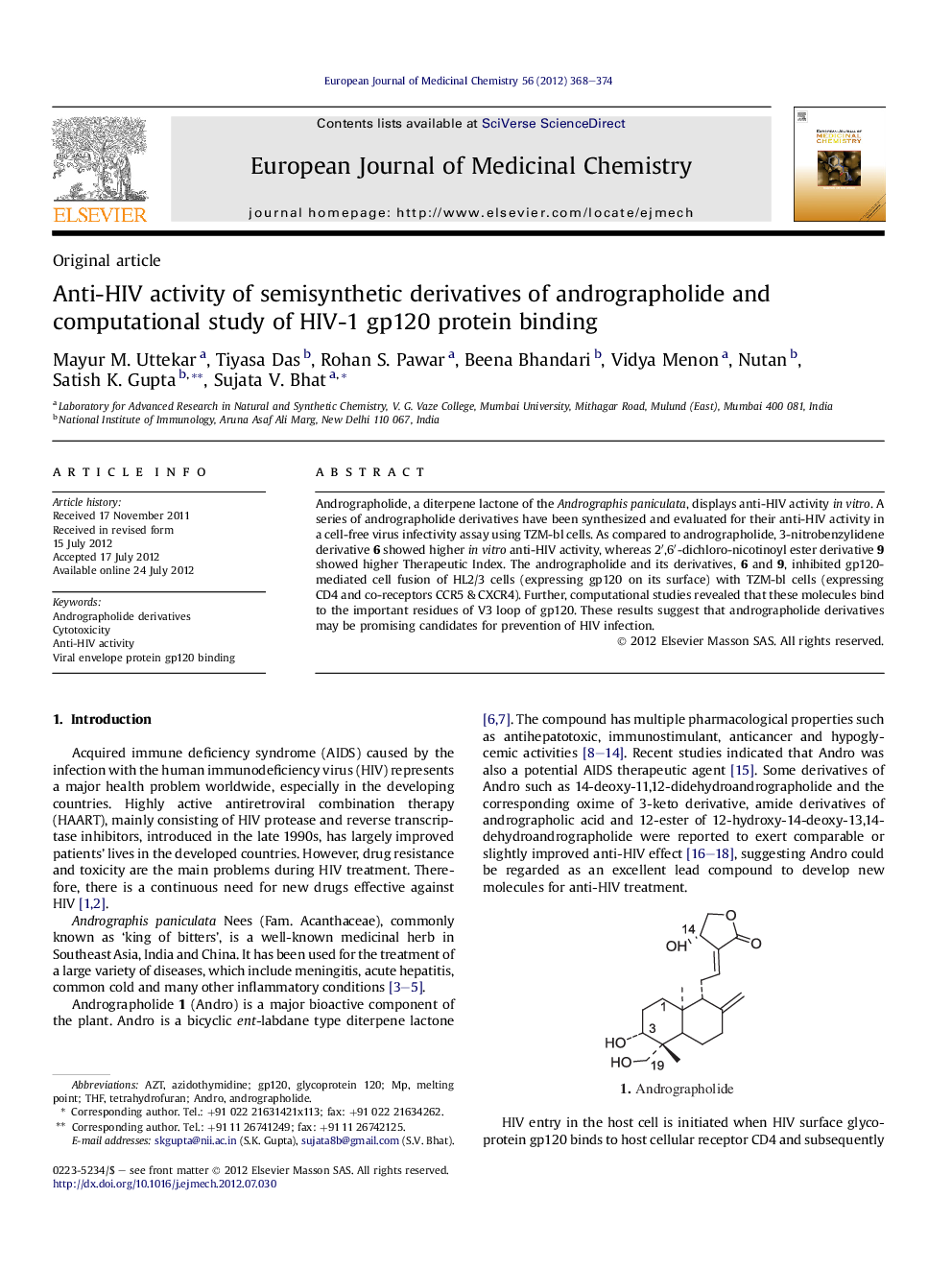| Article ID | Journal | Published Year | Pages | File Type |
|---|---|---|---|---|
| 1397429 | European Journal of Medicinal Chemistry | 2012 | 7 Pages |
Andrographolide, a diterpene lactone of the Andrographis paniculata, displays anti-HIV activity in vitro. A series of andrographolide derivatives have been synthesized and evaluated for their anti-HIV activity in a cell-free virus infectivity assay using TZM-bl cells. As compared to andrographolide, 3-nitrobenzylidene derivative 6 showed higher in vitro anti-HIV activity, whereas 2′,6′-dichloro-nicotinoyl ester derivative 9 showed higher Therapeutic Index. The andrographolide and its derivatives, 6 and 9, inhibited gp120-mediated cell fusion of HL2/3 cells (expressing gp120 on its surface) with TZM-bl cells (expressing CD4 and co-receptors CCR5 & CXCR4). Further, computational studies revealed that these molecules bind to the important residues of V3 loop of gp120. These results suggest that andrographolide derivatives may be promising candidates for prevention of HIV infection.
Graphical abstractAndrographolide and derivatives displayed good anti-HIV activity. These molecules inhibited gp120-mediated cell fusion. The computer aided modeling revealed binding of these molecules to important residues of V3 loop region of GP120 protein.Figure optionsDownload full-size imageDownload as PowerPoint slideHighlights► A series of andrographolide derivatives have been synthesized. ► Derivatives 6 and 9 displayed potent in vitro anti-HIV activity. ► These molecules inhibited gp120-mediated cell fusion. ► Computer modeling studies with V3 loop of HIV-1 gp120. ► Good binding to important amino acid residues of V3 loop.
